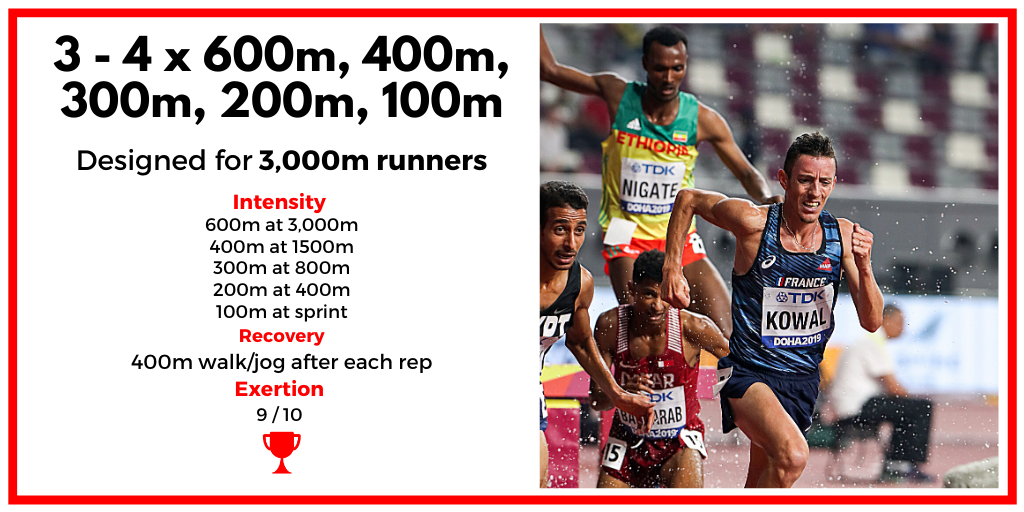Workout of the Day: 3-4 x 600m, 400m, 300m, 200m, 100m
3-4 x 600m, 400m, 300m, 200m, 100m
Intensity — 600m at 3K pace, 400m at 1500m, 300m at 800m, 200m at 400m, 100m at sprint paces
Recovery — 400m walk/jog recovery after each rep
Exertion — 9/10
Context & Details
Alberto Salazar called this session the “Fred Meyer Workout” (named after a local one-stop-shop grocery store chain in the Pacific NW).
He got it from his college coach, Bill Dellinger, who got it from his college coach Bill Bowerman, who got it from Igloi. So really it should be called “The Igloi.”
Here’s why cut-downs work: they force the body to overcompensate by subjecting it to very high intensities in a compounding state of fatigue.
The rule with cutdown is to decrease the rep length and increase speed.
The aim is provide just enough stimulus to warrant the desired overcompensation. As fatigue (both peripheral and central) set in, it gets harder and harder to maintain the desired velocities. So instead of doing 3-4 x 1 Mile at 3K pace, by splitting it up into a cutdown format and accelerating the speeds as the reps shorten, you get the same, if not slightly better, stimulus than straight miles at 3K pace.
Workouts like this also upgrade lactate-threshold velocity as a lot of lactate will be produced to supply the body with energy needed to maintain high neuromuscular power outputs. Also, this session improves vVO2 Max, resistance to fatigue and running economy. You can see why Alberto called it a One-Stop-Shop session.
I typically have younger runners only do 2 sets. Three to four sets for most college and pro level athletes is enough. I’ve only seen Galen Rupp do 5 sets.
This is a very demanding session. You’ll want about 3 days of easy activity afterwards. A middle distance runner I was familiar with did 3 sets of this session on a Tuesday before a championship meet which started on a Friday. She made the finals, but finished dead last, when she should have easily been on the podium. Her mistake is your advantage — do this workout in the heart of training, but no closer than 14 days before a key race.

